Ball Reviews
Review: Srixon Z-Star and Z-Star XV Golf Balls

Pros: Two different premium golf balls designed for higher swing speeds, deliver distance, exceptional short game control and durability. The Tour Yellow option is one of the best yellow golf balls available today.
Cons: Overlapping swing speed recommendations can make off-the-shelf selection of the right golf ball a little more difficult.
Bottom Line: While not as flashy as other premium golf balls on the market, both the Z-Star and Z-Star XV simply go about their business generating long distance off the tee, excellent spin around the greens, and a soft but durable feel.
Overview
The premium golf ball market is dominated by a few main players, generally with either a rich history, large marketing budget or both. On the other hand, while Srixon golf balls are in the winning bags of well-known players like Graeme McDowell and Keegan Bradley, you’re not as likely to find one in the woods or abandoned at the edge of a water hazard. But what I’ve found is that most players who have Srixon in the bag, especially their tour-caliber ball, did so with a purpose and have very specific reasons why they are playing a Srixon golf ball.
With the new Z-Star and Z-Star XV, Srixon offers two tour-level premium golf balls designed for higher swing speed players looking for maximum distance and exceptional short game performance.
Z-Star
The three-piece, 90 compression Z-Star is designed for golfers with swing speeds of 88-108mph. The large gradient core is softer at the center and harder on the outside which produces lower spin and a soft feel on full shots. The company’s propriety urethane cover, which they call SpinSkin, increases friction by 20 percent over previous versions, which leads to more spin and control. The 344 Speed Dimple pattern is designed to maximize surface coverage to reduce drag and increase overall distance.
[wrx_buy_now oemlink=”http://srixon.com/golfballs/z-star-tour-yellow/” oemtext=”Learn more from Srixon” amazonlink=”http://www.amazon.com/gp/product/B00O5A9I8Q/ref=as_li_qf_sp_asin_il_tl?ie=UTF8&camp=1789&creative=9325&creativeASIN=B00O5A9I8Q&linkCode=as2&tag=golfwrxcom-20&linkId=OCEXLCOIZMBTQCV4″]
Z-Star XV
The four-piece, 105 compression Z-Star XV is designed for tour-level swing speeds greater than 105 mph. The dual-core decreases spin off the driver while creating high spin off full wedge shots. The Z-Star XV also utilizes the SpinSkin urethane cover and 344 dimple pattern.
[wrx_buy_now oemlink=”http://srixon.com/golfballs/z-star-xv/” oemtext=”Learn more from Srixon” amazonlink=”http://www.amazon.com/gp/product/B00BMQFS7G/ref=as_li_qf_sp_asin_il_tl?ie=UTF8&camp=1789&creative=9325&creativeASIN=B00BMQFS7G&linkCode=as2&tag=golfwrxcom-20&linkId=SGN6XABJGJGDJC3H”]
The Z-Star and Z-Star XV are available now and carry a minimum advertised price of $44.99. Both are available in Pure White and Tour Yellow and come in standard play numbers (1-4).
Performance
Looking at the specifications of each ball, the performance characteristics are very similar. While the Z-Star is slightly softer, both the Z-Star and Z-Star XV offer a soft, responsive feel with tour-level distance and short game spin. As with all the golf balls in the premium market, there are subtle differences that should be considered for your individual game.
Srixon claims the Z-Star is built to generate slightly more spin on full shots than the Z-Star XV. The softer, thinner urethane cover of the Z-Star XV also should spin slightly more on short iron and wedge shots.
Like other reviews, I wanted to get a true sense of performance so I tested both balls in a variety of ways both with a launch monitor and on the course. To get the data, I hit both balls on a launch monitor with a 60-degree wedge, 6 iron and a driver. Testing indoors was necessary because I wanted to hit many shots with each club so I needed to be able to retrieve the balls. I headed to Golfsmith Extreme in Smyrna, Ga., where they let me take over a private fitting bay for a few hours. My normal playing swing speed with a driver is around 107 mph, which is within the recommended range of either golf ball.
60-Degree Full Wedge Shots
Based on Srixon’s claims, I expected the Z-Star XV to spin more on full wedge shots than the Z-Star or the other balls in Srixon’s 2014 lineup. I expected the launch angle, peak height and ball speed would be almost identical. With the wedge, I’m primarily interested in spin and controllability. When it comes to spin, the Z-Star XV generated the most of any ball in Srixon’s 2014 lineup. While they both created close to 11,000 rpm of spin, which is similar to other premium balls on the market, the Z-Star XV was more than 300rpm faster than the Z-Star. While the Z-Star launched slightly higher, the peak height and ball speed was identical. What surprised me most during the test was the performance of the Q-Star, which generated very similar spin to the Z-Star XV with a slightly higher launch and peak height.
The spin numbers of both balls is more than enough to hit the green, spin back and offer the kind of controllability you expect in a premium golf ball.
6 Iron Shots
The similarity between the two balls continued during the 6 iron testing. The Z-Star produced 202 rpm more spin, launched 0.2-degrees higher, but had the same peak height and ball speed. Both balls had the same descent angle, which will help drop balls onto the green and get them to stop. Because both balls are very similar, I needed to look at carry and total distance to help separate them. Unfortunately, those numbers were almost identical as well, but the Z-Star XV edged out the Z-Star with one more yard of carry distance and two more yards of overall distance.
With the longer irons, I like to put a golf ball in play that will give me a slightly higher launch and a healthy amount of spin without balooning up and getting out of control. Both the Z-Star and the Z-Star XV fit that criteria, but thanks to the extra spin generated on full wedge shots, the Z-Star XV still has the edge.
Driver Shots
I’m continuing to lower the spin off my driver with swing adjustments, but every bit helps. Based on the data I’ve seen so far, I would expect the Z-Star to launch slightly higher, hit a higher peak height, but also spin more. With that in mind, the Z-Star XV would be better suited to my game.
Looking at the results, that is almost exactly what happened. The Z-Star XV generated 2 mph more ball speed, over 300 rpm less spin, and hit a peak height of 1 yard lower than the Z-Star. Interestingly, the Z-Star actually launched slightly lower, albeit only 0.2-degrees, but still lower. Once again however, the Q-Star performed really well, generating less spin and a higher launch than the Z-STar XV.
The Z-Star XV was also the longest golf ball in the lineup, flying 2 yards longer than the Q-Star and 3 yards longer than the Z-Star. With the longest distance as well as lower spin and peak height, the Z-Star XV continued to suit my game the best. I anticipate many golfers with swing speeds greater than 100 mph will also find the Z-Star XV is the best performing premium ball in Srixon’s 2014 lineup.
On-Course Testing
Unlike my previous reviews, I tested these golf balls during on-course rounds before I was able to get on a launch monitor and analyze the data. This allowed me to simply watch how the balls performed. I started the round with the Z-Star and alternated every few holes to ensure each ball had a variety of on-course situations to deal with.
Having never put a Srixon tour ball in play, I was really excited to see how they performed. From the first tee through the first hole, I was impressed. The launch and spin off the driver looked like what I expect from a tour ball; it didn’t balloon up and it had a nice stable flight. Trajectory off the mid irons appeared to be slightly lower than other balls I’ve played, which would eventually be confirmed during launch monitor testing. But we’re really talking about subtle differences.
From 100 yards and in, I really liked the spin I was seeing off both balls. The Z-Star XV appeared to spin slightly more than the Z-Star, but I was able to hit and hold greens with the irons and even longer clubs such as the hybrid. The Tour Yellow really popped off the fairways and greens. I dropped some nice putts with both balls and was generally happy with the performance. Interestingly, the Q-Star, which I will review in the future, also performed really well on the course. The launch monitor data would eventually suggest that I play the Z-Star XV, but it is hard to argue against the performance of the sub-$30 Q-Star.
Half Wedge Shots
Testing during my rounds allowed me to hit some half wedge shots, but I wanted to hit more in a row from half wedge distance to really get a feel for the performance. Both the Z-Star and Z-Star XV allowed me to hit low spinning wedge shots that hit, checked and stopped dead. If I’m being picky, the XV did appear to grip the greens with a bit more power, but both had a lot of spin. There really isn’t a shot you can’t hit with these balls. High soft shots, low spinners, and controlled-spin running shots are all possible with either ball.
Around the Green
For shots around the green, I didn’t expect to see any difference in performance as both balls have the same proprietary SpinSkin urethane cover. Within 40 yards, the cover makes all the difference. These are tour balls and around the greens is where the money is made. Both balls allowed me to hit any shot I wanted from bump-and-runs to my favorite, the quick-spinning chip that hit and stop dead. Bunker shots performed equally well and I was able to hit chunk and run bunker shots as well as more aggressive spinners. Personally, I didn’t notice any difference in feel between the two as both balls had a nice soft responsive feel.
Putting
With the putter in hand, the Z-Star felt slightly softer off the putter face. But both felt very similar. Both balls have a nice, consistent and true roll. I didn’t feel like the balls were too hot or needed any real adjustment to roll nice putts. While I wouldn’t call either of these balls the softest in the premium market, neither felt hard or clicky. They both simply performed as expected.
Looks and Feel
Both the Z-Star and Z-Star XV felt really nice on all shots, especially shots around the green. The feel produced wasn’t necessarily spongy or buttery, but it was soft enough that solid strikes gave me that pure, almost indescribable feeling we all strive for. The cover of the Z-Star XV feels very soft and slightly softer than the Z-Star. These are not the softest feeling tour balls, I still believe the Titleist Pro V1 is the softest premium ball on the market, but they are also not the hardest balls on the market either. Like so much about Srixon, they simply just perform. We all know that feel is subjective, so I would suggest testing a sleeve out for yourself.
As I’ve mentioned in other reviews, the Titleist Pro V1 is the gold standard when it comes to the look of a golf ball. While the Z-Star and Z-Star XV won’t be dethroning the king anytime soon, I’m really drawn to these balls. Maybe it is because they aren’t as common so when I see one, it looks really unique. The logo and alignment marks on the side have a modern quality and the italicized name in the alignment mark gives the ball a sense of movement and power.
No discussion of the look of a Srixon golf ball would be complete without talking about the Tour Yellow. Srixon hit a home run when it introduced its yellow golf ball years ago. I love the pearlized yellow, which to me is slightly tighter than the pearlized yellow of the Titleist NXT Tour. While I have not always been a yellow golf ball fan, it is safe to say that any time I put a Srixon in play, it will be the Tour Yellow version.
Durability
It is accurate to say that under the right circumstances we can all scuff, scrape and chew up any premium golf ball on the market. The soft urethane covers are designed to allow clubs, especially wedges with clean grooves, to grab a hold of the cover and fire up some serious spin. Some of the premium balls on the market hold up well and some do not hold up as well.
I used three of each type of golf ball during testing and both the Srixon Z-Star and Z-Star XV held up really well during testing. After a battery of drivers, 6-irons, wedges, and putters, both balls came away with only minor scuffs and marks. The softer and thinner cover of the Z-Star XV was only slightly less durable than the Z-Star. I didn’t put any gashes on the balls and each could be cleaned up and put back into the bag.
Bottom Line
The Srixon Z-Star and Z-Star XV appear comfortable hanging just in the shadows and quietly delivering tour-level performance for golfers with higher swing speeds. They aren’t flashy and won’t dominate your TV screens with too many ads during final round coverage. But both balls offer golfers long distance off the tee and excellent short game control around the greens, while still being durable enough to get through an entire round.
If you’re looking for a new tour-caliber ball, both options should be on the list to test. For golfers with swing speeds under 105 mph, the Z-Star is the place to start. For golfers with driver swing speeds greater than 105 mph, the Z-Star XV is worth putting in play to see how it works for your game.
- LIKE306
- LEGIT59
- WOW25
- LOL8
- IDHT9
- FLOP2
- OB2
- SHANK16
Ball Reviews
Is the Future of Golf Balls Lower Spin?
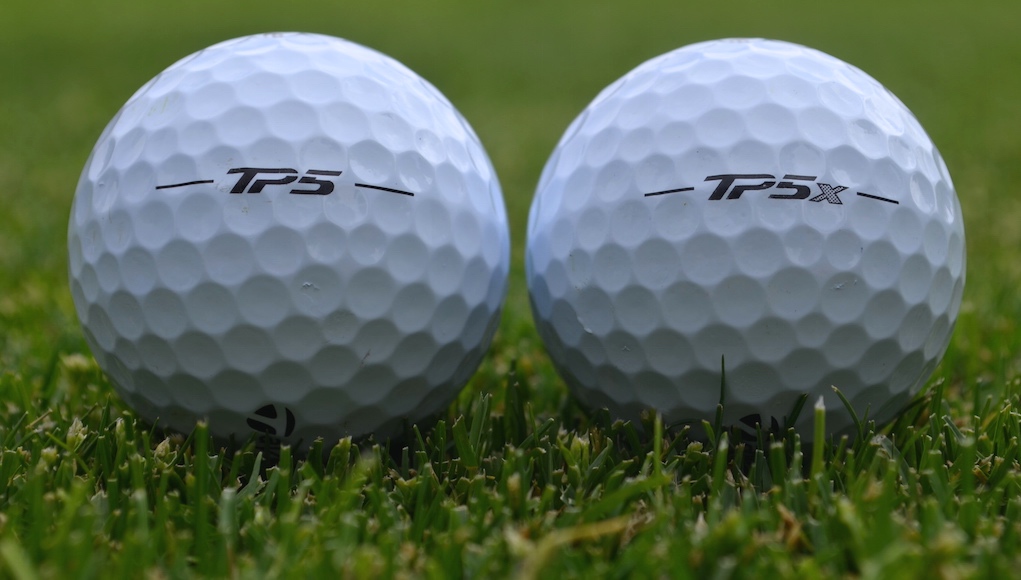
For years now, TaylorMade has been preaching lower spin to create more distance, especially in its drivers. Its original SLDR driver was actually so low spinning that TaylorMade encouraged golfers to try higher-lofted club heads, or to “loft up,” so golf balls wouldn’t dive out of the air. Now, when you look around at the popular drivers in the industry, most of them are designed to lower spin. TaylorMade was ahead of the curve.
With its new TP5 and TP5x golf balls, TaylorMade is pushing a similar initiative: lower spin on all full shots.
“This ball is different. You can make the argument this is too hot a golf ball for people who don’t spin it (enough). But that’s not the large percentage of golfers.”
For driver shots, it’s easy to understand the benefit of lower spin as long as the golfer launches it high enough. Low spin plus high launch equals more distance; that’s just a math equation. But with golf balls, as opposed to drivers, their jobs are also to get close to the hole, not just go as far and straight possible. With that in mind, is lower spin necessarily beneficial on ALL full shots, including the irons?
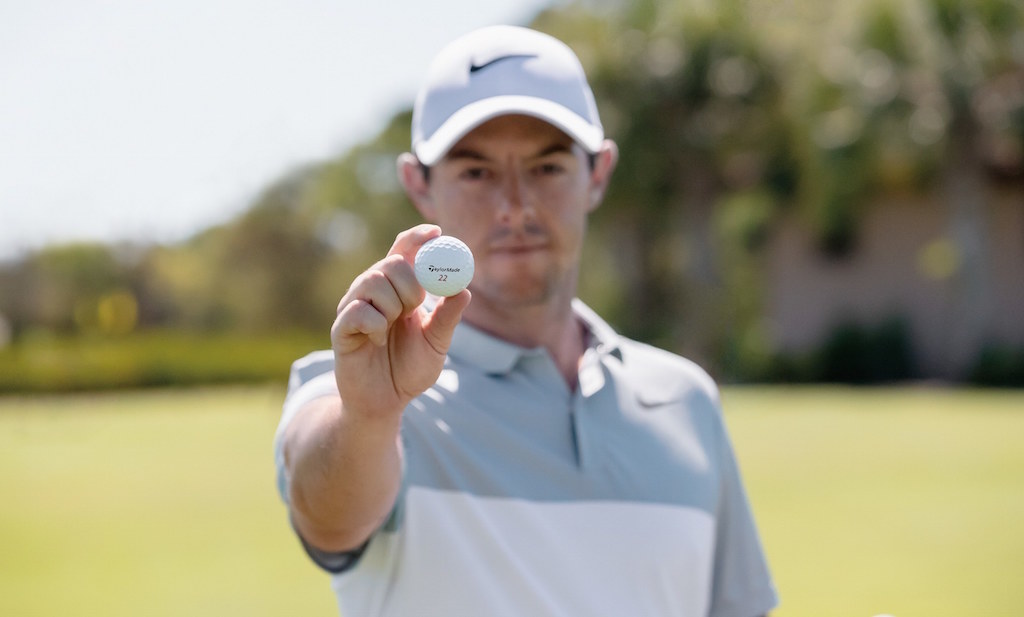
For Jon Rahm and Rory McIlroy, who both switched to TaylorMade TP5x golf ball this season — the lower-spinning and slightly firmer-feeling golf ball in the TP5 line — the answer is clearly “yes.” Rahm saw an 800 rpm drop in iron spin with a 4-iron compared to his Titleist’s Pro V1x golf ball and a 400 rpm drop in driver spin, according to TaylorMade. McIlroy saw up to 10 yards in extra distance with a 5-iron, and he picked up distance with the driver, as well. According to Eric Loper, Director of Golf Ball R&D at TaylorMade, McIlroy was hitting his 7 iron at 16.1 degrees of launch with 6350 rpm, and his 4 iron at 11.1 degrees of launch with 3800 rpm during his initial Trackman testing at The Bear’s Club.
“(With a 7 iron) you have to hit it about 7000 (rpm) or less, and he was hitting (his previous ball) up to 7500 (rpm),” Loper said. “That’s too high… (With the TaylorMade TP5x) he didn’t express any concern with (spin being too low). It was launching high, getting to its apex and landing soft.”
Hoyt McGarity, President of True Spec Golf, an internationally renowned custom club fitter with more than a dozen locations, has seen similar performance gains with TaylorMade’s TP5x golf ball through his personal testing and his testing with Tour players. He said he’s seeing 2-3 mph more ball speed compared to other golf balls. Just as importantly, he’s seeing those gains with a higher ball flight in what he called “straight up” club tests.
“Some of the Tour players — straight up, same loft, same lie, same golf club, same everything — they would launch this golf ball almost a degree higher, which is amazing,” McGarity said. “I was seeing almost 2-3 mph more ball speed for these Tour players, not that they need more distance, but I’m like, ‘You’re launching higher and it’s going further and it’s still coming in soft; it’s not coming in low and hot. It’s coming in high and still soft, so what’s the disadvantage?’ If you’re a low-ball hitter with low spin, you might have some issues. Your half shots might be tough to control the distance on it, that’s all.”
So while TaylorMade’s TP5 and TP5x golf balls are designed to go farther and with less spin on full shots, the company says their steeper landing angles will help them stop nearly as fast as higher-spinning balls. TaylorMade’s belief is based on the company’s scientific bounce-and-roll calculations, which factor in green conditions and landing characteristics. Yes, the lower spin of its golf balls in relation to competitors leads to minimally more roll out, but the amount is insignificant according to TaylorMade: an additional 1-1.5 feet. The company also points out that with a longer-flying golf ball, golfers will be hitting shorter clubs into greens, leading to more control. An 8 iron will yield greater stopping power and accuracy than a 7 iron, right?
Expert fitter Scott Felix of Felix Clubworks agrees with TaylorMade in theory. He said that as long as the golf ball is coming into a green at a steep enough angle, low spin is not a problem for approach shots.
“Most golfers spin the ball too much with their irons, costing them distance,” Felix said, “…but for golfers who already have a flat trajectory (with their irons), lowering spin won’t help them hold the green.”
McGarity added that about 80 percent of golfers who come to him for a fitting spin the ball too much, and for Tour players, the drop in spin won’t have a detrimental effect.
“Lets say the average spin on Tour is 6,000 (rpm with a 6 iron); it’s not like [TaylorMade’s TP5x golf ball is spinning] around 4,000 (rpm),” McGarity said. “If your average land angle is 49 degrees, they’re hitting these balls at say 5800 spin, which I think is great, and with a 50-degree land angle, so what’s the harm? It’s not like it’s coming in at 44 degrees; that’d be probably a one hop over the back and get into a little trouble.”
On the other hand, Felix notes that some Tour players simply want maximum control from a golf ball due to firmer fairway and green conditions, so lowering spin isn’t always the best option for them. But for average golfers, the distance gains will be beneficial.
“Most golfers aren’t playing in Tour conditions and will simply benefit from hitting the ball farther and having shorter irons into the green,” Felix said.
McGarity also warns golfers who already play low-spinning irons and drivers, and who spin the ball below 2,000 rpm with the driver, that the TP5 and TP5x golf balls may not be for them.
“This ball is different,” McGarity said. “You can make the argument this is too hot a golf ball for people who don’t spin it (enough). But that’s not that large percentage of golfers.”
After announcing an equipment contract with TaylorMade at The Players Championship, Rory McIlroy called TaylorMade’s TP5x golf ball the most important factor in his decision to sign with the company. With the new ball, he said he not only picked up distance, but consistency and control in the wind.
“I wasn’t really happy with the golf ball I was playing, and I needed to do something,” McIlroy said. “I felt like I struggled in the wind. So I sort of went back to the drawing board and tested for about 10 days pretty extensively after Augusta … I worked with the TaylorMade guys one day and started just on Trackman on the range and saw stuff with the golf ball … I thought, ‘Wow, this is what I need.’ This is exactly the thing that I’ve been struggling with.”
McGarity’s experiences confirmed McIlroy’s sentiments.
“I picked up a half club and I sit around and hit balls all the time on Trackman, so for me to pick up a half a club, it’s not the club it has to be the ball,” McGarity said. “And into the wind I can definitely see it’s more penetrating. I’m not a super high-spin player, so some shots I’ll hit the ball farther than I expected, but I’d rather have that issue than (to hit it) short.”
So there’s agreement that the ball spins less, goes farther and performs better in the wind with irons. But when fitting a golf ball, is iron play even the best place to start? Golf is about more than just iron shots, after all.
For Felix, a ball fitting begins by having a client hit “a bunch” of different golf balls on the putting green to narrow it down to a few based on feel preferences. Then he has the golfer take those golf balls to the chipping green and bunker. He then works back to 40-yard shots, narrowing down the options throughout the process based on feel and performance. After that, golfers will progress to the driver, and then to the irons.
“Usually you want to get a few balls you really like on and around the greens, then work backwards from there,” Felix said.
Initial testing for McIlroy started on the golf course, and not on Trackman, according to TaylorMade representatives. Once he became comfortable with performance and feel, he then took to Trackman to get dialed in with spin and match the golf ball to his equipment.
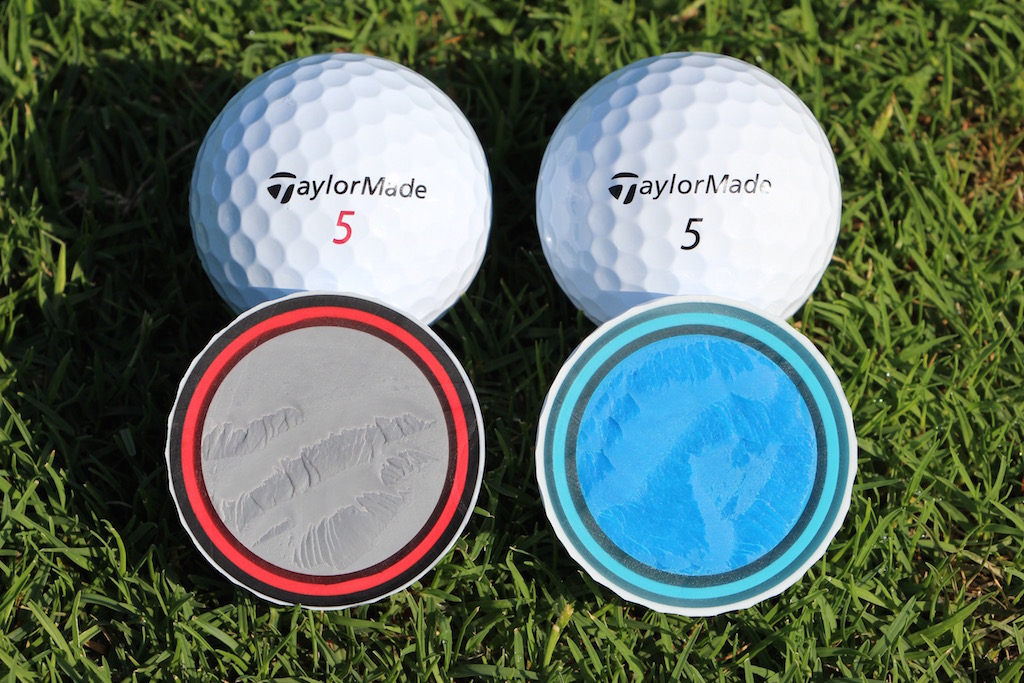
TaylorMade’s TP5x and TP5 golf ball (right), which has a slightly firmer feel.
Despite the low-spinning qualities of the golf balls on full shots, TaylorMade believes it’s giving up nothing to the competition in terms of short game performance. “There’s no golf ball that spins more around the greens,” a TaylorMade representative told me. That’s a legal way of saying no other golf ball company can prove, with confidence, that its golf ball spins more around the greens.
By producing extremely low spin on full shots, but without giving up performance and feel around the greens, TaylorMade says it’s providing the best qualities from each end of the spectrum with its TP5 and TP5x golf balls. But… how? TaylorMade engineers accomplished the feat by using larger and softer-compression cores. TaylorMade says the cores “activate” at 70 mph of swing speed inside of the five-piece constructions, which also have firm mantle layers and soft, urethane covers. The result is low spin on full shots, and high spin on shorter shots.
“It’s the real first golf ball (TaylorMade has) made that’s a game changer,” McGarity said.
TaylorMade does admit, however, that golfers may be sacrificing a bit of “workability” with the irons. That’s to say hitting hooks and slices with its golf balls becomes more difficult due to the lower spin. While the TP5 will offer a bit more of that control than the TP5x, it’s definitely something to keep in mind for those who prefer to play a Bubba Watson-style of golf.
Looking to the future
So does all of this mean that lower-spinning golf balls on full shots are the future of golf? Will we see golf equipment companies striving for drastically lower spin over the next few years?
TaylorMade representatives say they continue to chase lower spin in their prototyping, and until the golf ball is diving out of the air to the golfer’s detriment, lower spin is the future of golf balls. Obviously, TaylorMade is fully committed to a lower-spinning golf ball, and lower spin in general throughout its product lines.
For other premium golf ball manufacturers, bringing lower-spinning options to the market seems likely, given the performance benefits and Tour validation of TaylorMade’s new golf balls. But there’s a reason there are so many variations of golf balls on the market; every golfer is different. Some need more spin with the driver and want more workability with the irons, some want a super firm feel and others just want the cheapest ball possible.
Golfers should view TaylorMade’s TP5 and TP5x golf balls as options in the vast marketplace of golf balls, and perform thorough testing to figure out if this is the right line of golf balls for their game. And remember, lower spin and more distance will require recalibrating your iron distances, and possibly adjusting your equipment, so a mid-season switch is recommended only to those who are willing to put in the necessary work.
- LIKE311
- LEGIT52
- WOW18
- LOL8
- IDHT2
- FLOP6
- OB2
- SHANK79
Ball Reviews
Review: Callaway Chrome Soft X Golf Balls
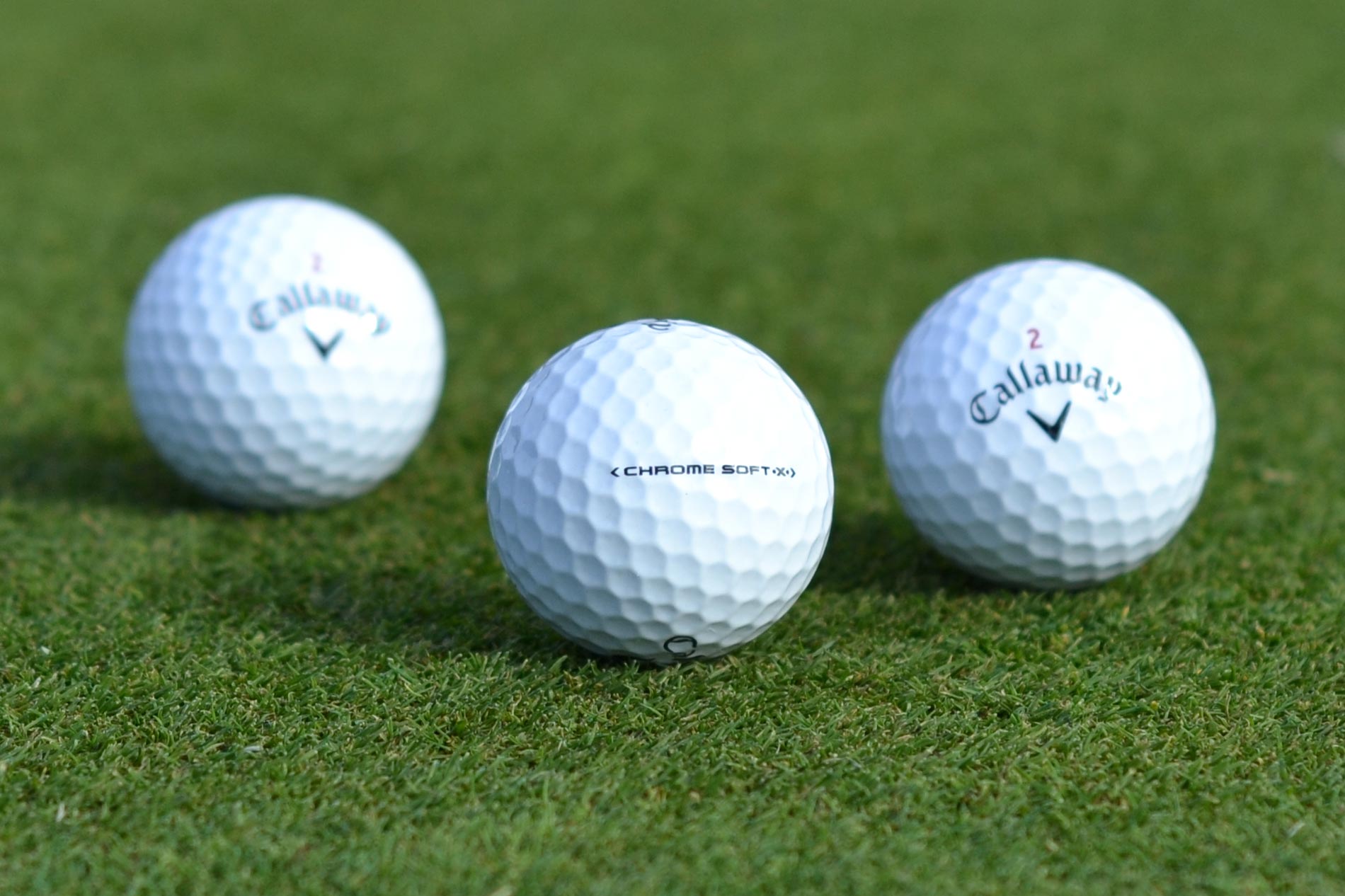
Pros: Incredibly soft feel like the Chrome Soft, but the Chrome Soft X increases spin through the bag to give better players more control.
Cons: Golfers who struggle with too much slice or hook won’t find it any easier to keep shots close to the target with the Chrome Soft X.
Who They’re For: Better players with higher swing speeds looking for a soft-feeling ball that checks up faster with iron shots than Chrome Soft.
The Review
Callaway says the Chrome Soft is “the ball that changed the ball,” and in many ways that’s true. It’s a tour-level golf ball with a softer feel, less spin through the bag and even a lower price point ($39.99) than some other tour balls in its category.
The Chrome Soft is Callaway’s best ball option for the vast majority of golfers (and received a 5-star rating by GolfWRX), but it isn’t for everyone. Callaway’s solution for them is its new Chrome Soft X golf ball.
What’s New in the Chrome Soft X
The original Chrome Soft golf ball, launched in 2015 had the very soft compression of 65. When Callaway released the 2016 version of Chrome Soft, it gave the ball a slightly higher compression (75), which improved its consistency on short-iron shots. The compression of its new Chrome Soft X is 90.
The reason for the higher compression has to do with the low-spin profile of the Chrome Soft, a blessing to most golfers as it helps their shots fly straighter and farther. It’s not ideal for some tour pros and better golfers, however. We’re talking about the kind of golfers who have great mechanics and strike shots consistently on the center of the club face. They often have a ball flight that is so dialed in that the lower-spinning performance of the Chrome Soft makes their shots harder to control. To address that small but important segment of the golfing population, Callaway created the higher-spinning Chrome Soft X.
Under the hood, Callaway used a slightly thinner urethane cover, increased the size and hardened the compression of the Dual SoftFast core, and enhanced the HEX Aerodynamics. As a result, the Chrome Soft X should generate more ball speed and spin through the entire bag.
Dave Bartels, Callaway’s Senior Director of Golf Ball R&D, says golfers will be able will notice the differences and have a clear favorite. “We expect that golfers who like the Chrome Soft X probably won’t like the Chrome Soft very much, and vice versa.”
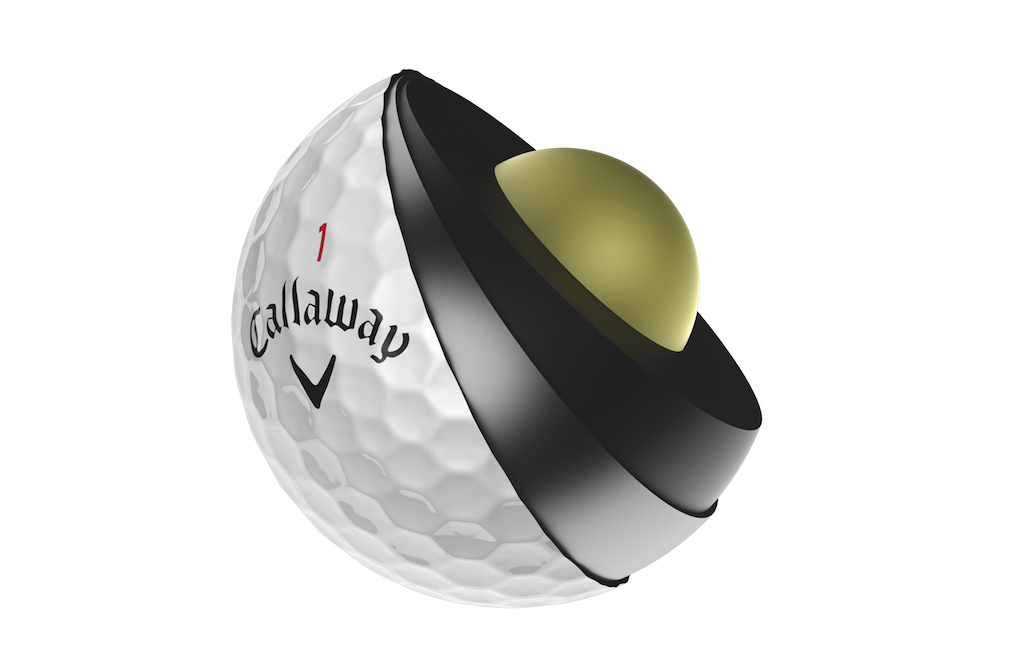 The Chrome Soft X ($39.99) will be in stores February 3 in White and Yellow.
The Chrome Soft X ($39.99) will be in stores February 3 in White and Yellow.
Performance
Since the Chrome Soft X is meant to be a complimentary golf ball to the Chrome Soft, we tested them head-to-head.
Compared to the Chrome Soft the Chrome Soft X should:
- Feel almost as soft as the Chrome Soft with the same durability.
- Generate more spin where better golfers need it.
- Generate faster ball speeds.
Like previous reviews, I tested these on the course and on a launch monitor with a 60-degree wedge, 6-iron and a driver. To allow me to re-hit each ball numerous times, I completed the testing indoors on a camera-based SkyTrak launch monitor. To keep the numbers as consistent as possible between the balls, I threw out and re-hit any shots that were not struck on the center and did not land within a designated target zone for each club (Wedge: +/- 3yards, 6 Iron: +/- 8 yards, Driver: Target width of 40 yards).
But I’m not a robot, so take that into account.
60-degree full wedge shots
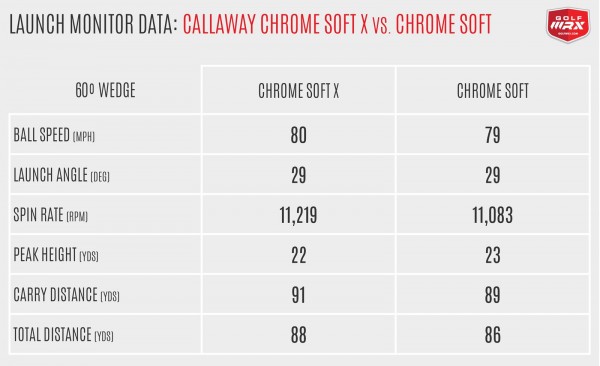 Main differences we expect to see: Not many. If anything, the Chrome Soft X might generate slightly higher ball speeds.
Main differences we expect to see: Not many. If anything, the Chrome Soft X might generate slightly higher ball speeds.
What the data actually shows: Pretty much as expected. Overall, the Chrome Soft X clocked 1 mph more ball speed, 136 rpm more spin and carried 2 yards farther. These are very subtle differences, and for an amateur like me I would not expect to notice a difference on the course.
The larger Dual SoftFast core and higher compression could account for the additional ball speed and carry distance. For me, 2 yards won’t require much of an adjustment. If you are a better player completely dialed in with your distances, you might need to make a minor adjustment.
What I saw on the course: When I’m testing golf balls, I like to drop one down without looking at the label and hit a shot. This allows me to remain unbiased in my expectation and just watch what the ball does. When I did this test with the Chrome Soft X on a full wedge shot, I was instantly impressed. The feel was incredible and the distance was spot on. After the wedge testing, I would’ve put this ball straight in the bag.
6-iron shots
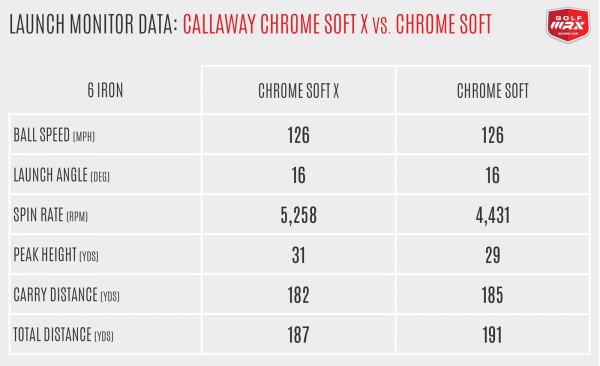 Main differences we expect to see: The Chrome Soft X should generate faster ball speeds and more spin than the Chrome Soft.
Main differences we expect to see: The Chrome Soft X should generate faster ball speeds and more spin than the Chrome Soft.
What the data actually shows: The Chrome Soft X is continuing to spin more through the bag. Ball speeds were slightly higher by about 0.8 mph. The Chrome Soft X generated a considerable amount of additional spin, but also flew slightly higher and had a steeper descent angle.
Just like you’ll see with the driver below, the additional spin decreased my distance (the Chrome Soft X averaged 3 yards less carry and 4 yards less total distance), but increased my stopping power.
What I saw on the course: Just like previous Chrome Soft balls, the feel off the club face with mid irons was very soft. I really noticed the additional spin on the course, as my draw shot shape started to get a little more curve to it and my shots stopped faster on the greens. I felt like I was able to attack greens with longer irons, flying shots all the way to the hole instead of playing a little short and letting the ball release more.
Driver shots
Main differences we expect to see: The Chrome Soft X should spin more slightly more and deliver higher ball speeds than the Chrome Soft.
What the data actually shows: I am not a high swing-speed player. My average playing swing speed is around 105 mph, which is generally considered the cut-off before you have a “high swing speed.” Also, I am not a low-spin player, so having a ball that can spin a little more might not be the best for my specific game. Based solely on that, I would not expect to see the full benefits of the Chrome Soft X
The testing backs this up. The Chrome Soft X delivered the same ball speed, but with 432 rpm more spin. Bartels says Callaway’s testing has shown golfers either spinning the Chrome Soft and Chrome Soft X the same off the tee, or an increase of 100-200 rpm with the Chrome Soft X. He called 400 rpm “within the ballpark,” but not typical.
Just to be clear, we’re talking about a change in performance that resulted in just 1 yard less carry distance and 3 yards less total distance; basically nothing.
What I saw on the course: As my launch monitor data showed, the Chrome Soft X appeared to fly higher and not roll as much when it hit the ground.
The one place I saw a benefit to the Chrome Soft X was when I contacted a drive high off the club face. With the Chrome Soft, these drives fell out of the sky more quickly, costing me carry distance. With the Chrome Soft X, they stayed in the air a little longer. It’s clear for low-spin players, or those with already optimal launch conditions, the Chrome Soft X can provide as good, if not better performance.
Around the Green
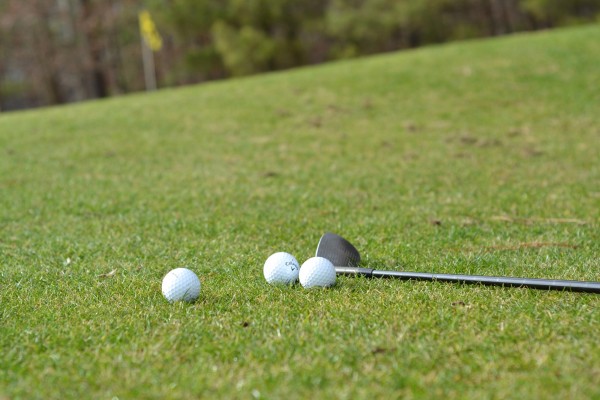 There is nothing this ball can’t do around the greens. I don’t have a tour pro’s arsenal of short game shots, but I do know the difference between a ball that can do anything and a ball that can do only some things.
There is nothing this ball can’t do around the greens. I don’t have a tour pro’s arsenal of short game shots, but I do know the difference between a ball that can do anything and a ball that can do only some things.
I put the Chrome Soft X through the paces of low spinners, high flop shots, bump and runs, and bunker shots. As expected, it performed identically to the Chrome Soft.
Putting
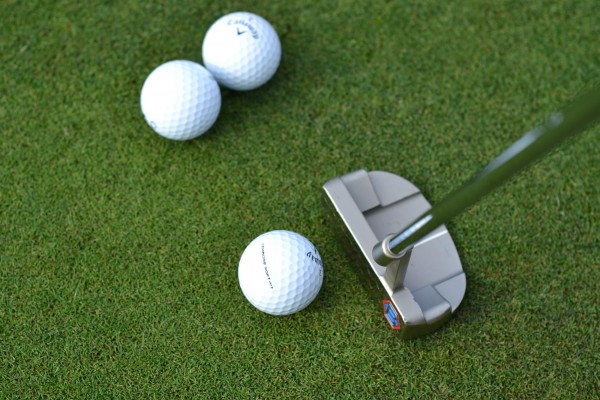 Putting one right after the other, if you are really paying attention, the Chrome Soft X feels slightly firmer off the putter face with a slightly higher-pitched sound than the Chrome Soft. But this ball is soft, smooth and rolls beautifully. I have always loved the way the Chrome Soft feels off the putter, going back to the 2015 ball. Even though it’s slightly firmer, the feel off the putter of the new Chrome Soft X continues to impress me (through the entire bag really).
Putting one right after the other, if you are really paying attention, the Chrome Soft X feels slightly firmer off the putter face with a slightly higher-pitched sound than the Chrome Soft. But this ball is soft, smooth and rolls beautifully. I have always loved the way the Chrome Soft feels off the putter, going back to the 2015 ball. Even though it’s slightly firmer, the feel off the putter of the new Chrome Soft X continues to impress me (through the entire bag really).
Feel is subjective, but I found the Chrome Soft X to be one of the softest tour balls on the market today.
Durability
I completed all my testing with only one ball, so it saw a considerable amount of shots. Like previous Chrome Soft balls, the Chrome Soft X is very durable. It took a beating with the 60-degree and showed only light scuff marks. Both the Chrome Soft X and the Chrome Soft perform very similarly in terms of durability.
The Takeaway
The Chrome Soft X isn’t for everyone and that is why Callaway is marketing the “X” as a complimentary ball to the Chrome Soft and not a replacement.
With the changes Callaway has made, the Chrome Soft X checks off all the criteria for a high-performance premium golf ball. If you thought the 2016 Chrome Soft was a little too soft with too little spin through the bag, the Callaway Chrome Soft X might just be the ball you’re looking for.
- LIKE294
- LEGIT43
- WOW14
- LOL8
- IDHT4
- FLOP8
- OB3
- SHANK25
Ball Reviews
Review: Callaway Chrome Soft golf balls
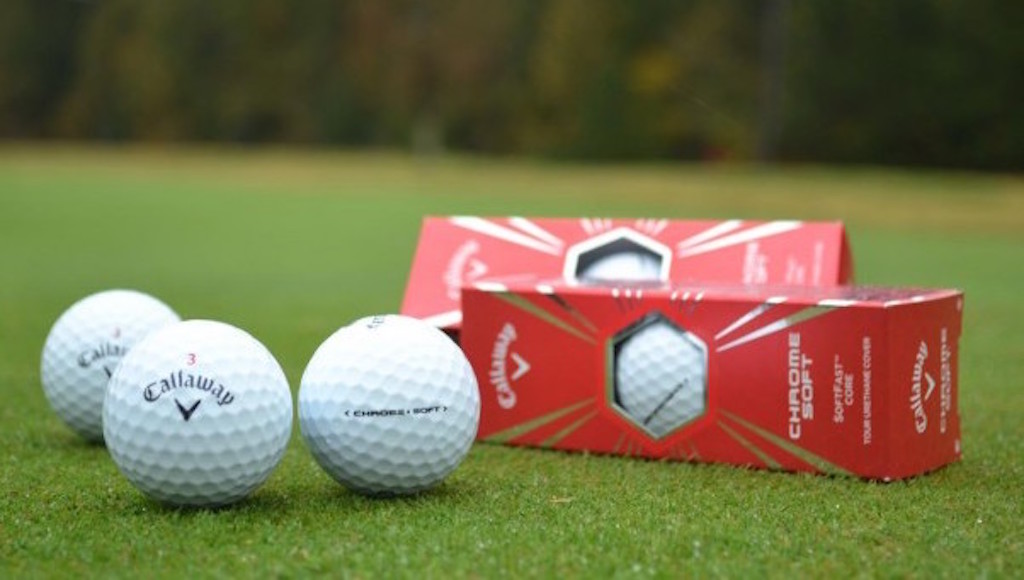
Pros: The Chrome Soft has an incredibly soft feel, but doesn’t skimp on performance. It will create maximum distance off the tee for 99 percent of golfers, yet offers short-game spin that rivals more expensive models.
Cons: Golfers with high swing speeds (105+ mph) — a.k.a. the 1 percent — may lose a few yards off the tee due to the Chrome Soft’s low-compression design.
Who They’re For: Any golfer can play the Chrome Soft.
The Review
Last year, Callaway released the Speed Regime golf ball line, which offered three different golf balls designed for different swing speeds, all with slightly different levels of compression and design. While this gave golfers the ability to really “fit” a golf ball to their game, more choices doesn’t always translate into better decision-making.
With its new Chrome Soft golf balls, Callaway has released just one ball, with one set of specifications, designed to provide a benefit to all golfers regardless of their swing speed.
The three-piece Chrome Soft, with a low-compression Soft Fast core and extremely soft DuraSpin cover, generates lower spin off the driver and long irons for more distance, while generating tour-level spin with shorter irons and shots around the green.
Let’s Talk Core
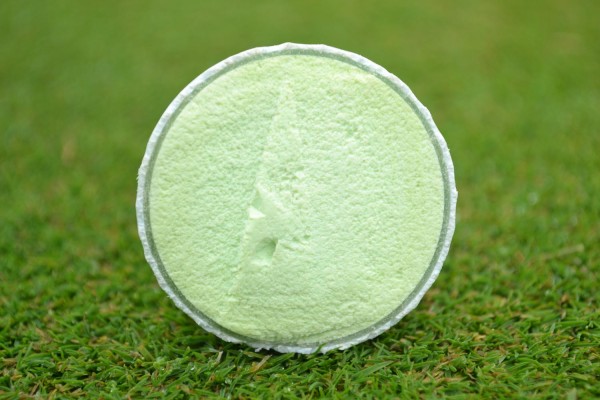 The Chrome Soft is all about the core, and since Callaway is devoting advertising space to actually talking about the compression of the golf ball, let’s dig into it a bit more.
The Chrome Soft is all about the core, and since Callaway is devoting advertising space to actually talking about the compression of the golf ball, let’s dig into it a bit more.
Thanks to a brand new SoftFast core, as Callaway calls it, the ball has a compression rating of 65. By comparison, last year’s Callaway SR-3 had a compression of around 105. Typically, the softer the core, the more the ball deforms at impact. This is great for slower swing speed players who need the ball to deform more so it can spring back into shape and generate more distance. But faster swing speed players can actually lose distance if the ball is too soft. After experimenting with 39 different prototypes, however, Callaway was able to create the right combination of the core and mantle layer so the Chrome Soft retains the energy from impact and keeps ball speed high — even at faster swing speeds.
The Chrome Soft is available now in White, Soft Yellow and Truvis Technology with an MSRP of $37.99. Custom player numbers and personalization is also available.
Performance
We put the new Chrome Soft to the test against the Callaway Speed Regime SR-3, which I tested last year.
Compared to the Speed Regime line the Chrome Soft should:
- Feel softer off every club, with slightly better durability.
- Generate less spin off the driver.
- Create more spin off shorter irons.
Like all reviews, I tested these on the range, on the course, and on a launch monitor with a 60-degree wedge, 6-iron and a driver. I headed to BridgeMill Golf Academy and worked with head pro Tom Losinger to get the data using a Trackman in his indoor studio.
60-degree full wedge shots
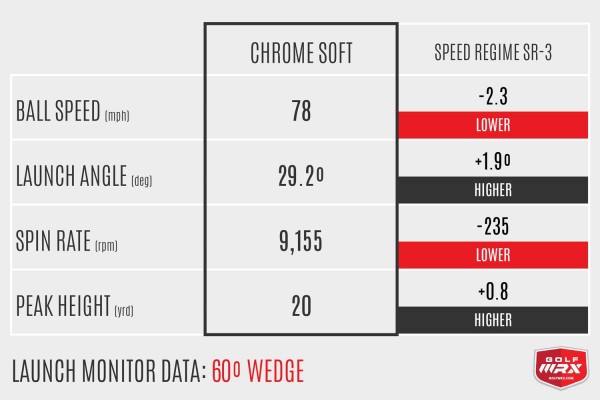
Main differences we expect to see: The Chrome Soft should generate more spin on full wedge shots.
What the data actually shows: Exactly what we expected to see. The Chrome Soft generated 200 rpm more spin than the SR-3, while launching lower and hitting a slightly lower peak height. I did, however, see a big difference in ball speed and carry distance, with the Chrome Soft flying three more yards on average.
Increased ball speed or carry distance with the shorter irons is not typically on the list of requests from better players. In this case, it’s a by-product of the new SoftFast core and three more yards of carry with a 60-degree wedge is fairly significant. That 10-foot putt for birdie is now almost 20. These types of gains will require an adjustment.
What I saw on the course: This ball was perfect inside 100 yards. If it was flying farther than other balls I’ve played, I didn’t notice. The trajectory on full wedge shots was nice and low compared to other balls, and I was already able to notice a difference in feel between the Chrome Soft and the SR-3. A difference of 200 rpm of spin wasn’t noticeable on the course, as both balls performed very similarly when they hit the green.
6-iron shots
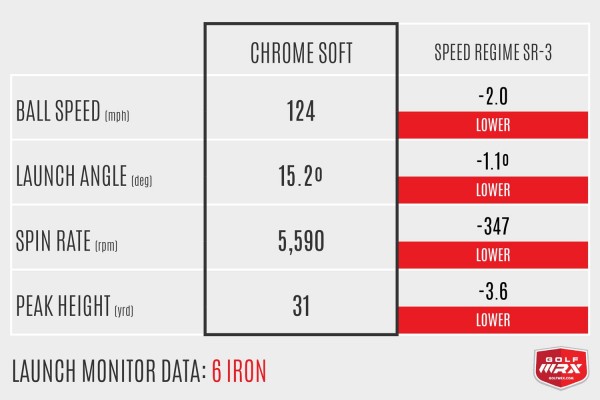
Main differences we expect to see: The Chrome Soft should generate faster ball speeds and less spin than the SR-3.
What the data actually shows: The data backed up the expectations when it came to ball speed. However, I actually saw more spin on my 6-iron compared to the SR-3 and even other tour balls. This could be due to a variety of factors concerning my individual swing, and other golfers might see less spin off their mid irons. Compared to the SR-3, the Chrome Soft launched a little higher, with more spin and ball speed, allowing it to carry a little more than one yard farther. It also hit a higher peak height with a steeper descent angle.
What I saw on the course: I was probably most impressed with the Chrome Soft with the mid to long irons. Yes, the ball performed great off the driver, but the softer feel was very apparent with an iron in my hands. Launching shots with mid to long irons had a more effortless feel. I was also able to get some nice height and spin on my longer irons without sacrificing distance, so I could land shots on the green and see them stick, instead of hitting and running off the back.
Driver shots
Main differences we expect to see: The Chrome Soft should spin less, but still generate more ball speed than the SR-3.
What the data actually shows: I’m a borderline high-speed guy with the driver. My average swing speed is around 106 mph — right on the borderline where golfers can start to “over-compress” the Chrome and possibly lose distance.
You may have read editor Zak Kozuchowski’s reviews on GolfWRX, who can generate more than 115 mph of swing speed with his driver. In his on-course testing, he said he hit the Chrome Soft about the same distance as other tour balls.
“If they liked everything else about the ball, I can’t imagine a golfer who swings 105+ mph wouldn’t play the Chrome Soft just because it was a few yards shorter than a higher-compression tour ball off the tee,” he said. “If a soft feel is important to them, that’s going to take precedence over a few yards of extra distance. And they’ll get those few yards back with their long irons, anyways.”
In my testing, the Chrome Soft generated slightly faster ball speeds, and a lot less spin — almost 300 rpm less spin than the SR-3. This translated into an extra 1.5 yards of carry, and more than 5 extra yards of total distance.
What I saw on the course: The distance gains and lower spin appeared to translate to the course. I wasn’t having any issues getting the ball to run out once it hit the fairway. And the distance appeared to be spot on, if not slightly longer.
Around the green
It is always fun to have that moment in a round where you hit the low, checking chip that freaks out your playing partners. I had that moment from about 55 yards away to a back pin, with out of bounds directly behind the green. With a 56-degree wedge, I hit the low shot and right before the ball hit the green, my playing partners were yelling “get down!” But I knew I hit it well and the ball bounced, checked, and then just lipped the cup.
Could I have executed that shot with other tour balls? Yes. But, it is important to know I can execute it with the Chrome Soft. I’m not a short-game wizard like one of Callaway’s more well-known tour pros, but these balls allow me to hit any kind of shot around the green without hesitation.
Putting
The Chrome Soft feels much softer than the SR-3, which was noticeably softer than previous generation Callaway tour balls. The sound profile has a lower, less “clicky” sound that translates into improved feel. The engineers really have brought the incredible feel of the SuperSoft to the tour-level Chrome Soft.
I’ve rolled some beautifully smooth putts with these balls. They are predictable and roll true when you strike them well. While I won’t go so far as to say they are the best feeling golf ball on the market (although they are close), they are the best feeling Callaway golf ball I’ve tested.
Durability
When most people hear “softer cover,” they instantly assume it will be less durable — and for good reason. It is counter intuitive to believe that soft equals durable. I’m not going to pretend to know the science behind it, but the DuraSpin cover is made from Thermoplastic Urethane, which actually becomes more durable the softer it gets.
I’ve played numerous rounds with the same ball, and also completed all the testing with only three Chrome Soft golf balls, so I can back up Callaway’s claims. These balls are definitely durable and can last numerous rounds if you don’t lose them. With fresh wedge grooves, I was getting all the spin benefits and little to no scuffing. I did see some minor scuffs after finding some rocky rough off the tee, but the ball was still playable and I shouldn’t have been over there in the first place!
The Takeaway
If you’ve avoided Callaway balls in the past because of the “clicky” stigma that has followed them around, it might be time to try a sleeve of the Chrome Soft. Many golfers, myself included, really love the feel of the Callaway SuperSoft, but not the overall performance. The Chrome Soft is a marriage of the soft feel of the SuperSoft with the tour-level performance of the Callaway SR-3. With low spin off the driver and the most spin on short irons of the tour balls I’ve tested this year, the Chrome Soft is one of the best golf balls on the market today.
We gave the Chrome Soft 5 stars, but one of our editors made the case that on a scale of 1-10, the Chrome Soft is an “11.” If you’ve seen the movie Spinal Tap, you know what he means.
See what GolfWRX Members had to say about the Chrome Soft in our Official Forum Testing Thread.
[wrx_retail_links productid=”12″]
- LIKE267
- LEGIT34
- WOW18
- LOL3
- IDHT5
- FLOP1
- OB2
- SHANK24
-
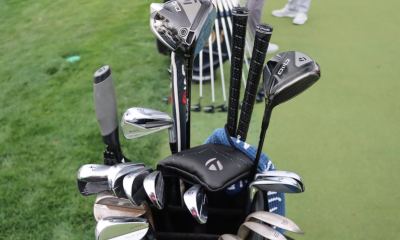
 Whats in the Bag3 weeks ago
Whats in the Bag3 weeks agoScottie Scheffler WITB 2024 (March)
-
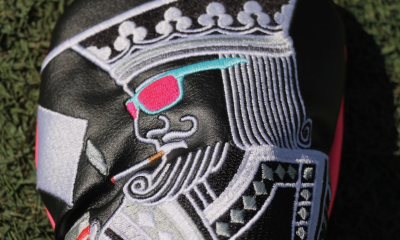
 Tour Photo Galleries3 weeks ago
Tour Photo Galleries3 weeks agoPhotos from the 2024 Arnold Palmer Invitational
-

 19th Hole3 weeks ago
19th Hole3 weeks agoJoaquin Niemann names 3 PGA Tour events he’d love to play each year ‘in a perfect world’
-

 19th Hole3 weeks ago
19th Hole3 weeks ago‘Seems suspect’ – PGA Tour pro hits out at decision to hand Adam Scott and Webb Simpson Bay Hill sponsor exemptions
-
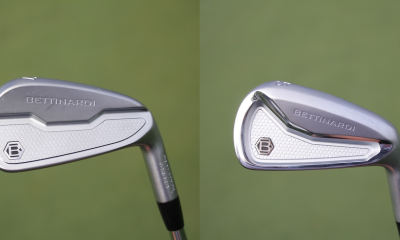
 Equipment3 weeks ago
Equipment3 weeks agoSpotted: Bettinardi irons at the Arnold Palmer Invitational
-

 19th Hole2 weeks ago
19th Hole2 weeks agoPaulina Gretzky opens up on receiving death threats following DJ’s move to LIV Golf
-
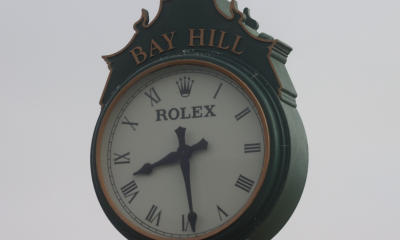
 19th Hole3 weeks ago
19th Hole3 weeks agoVincenzi’s 2024 Arnold Palmer Invitational betting preview: Big names ready to pounce at Bay Hill
-
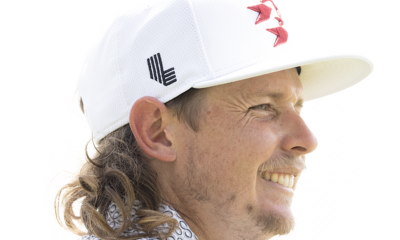
 19th Hole3 weeks ago
19th Hole3 weeks agoVincenzi’s LIV Golf Hong Kong betting preview: Trio of major champs primed for big week

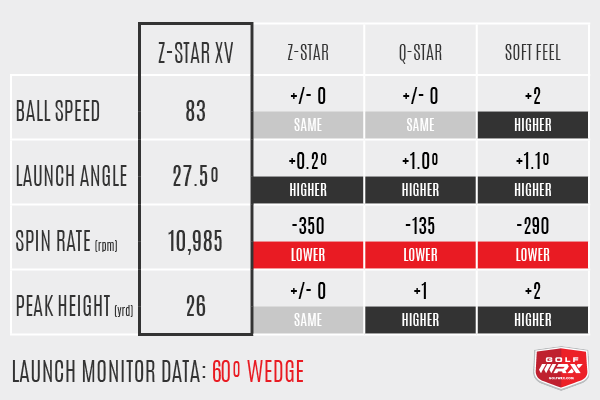
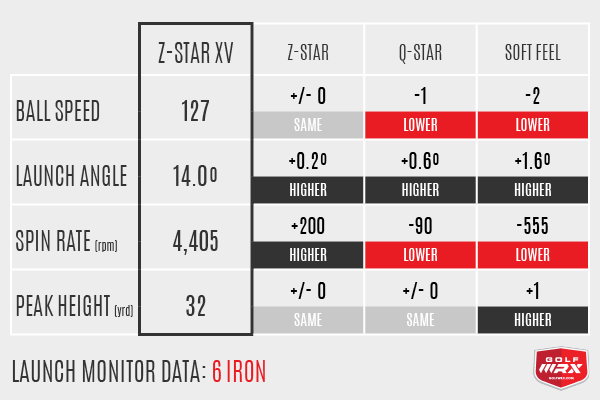
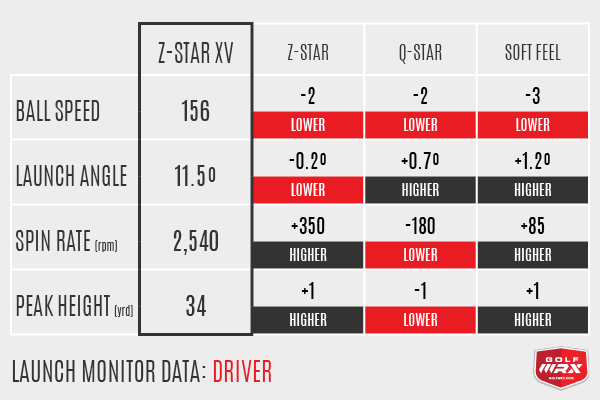
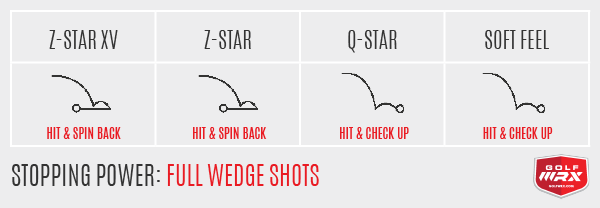
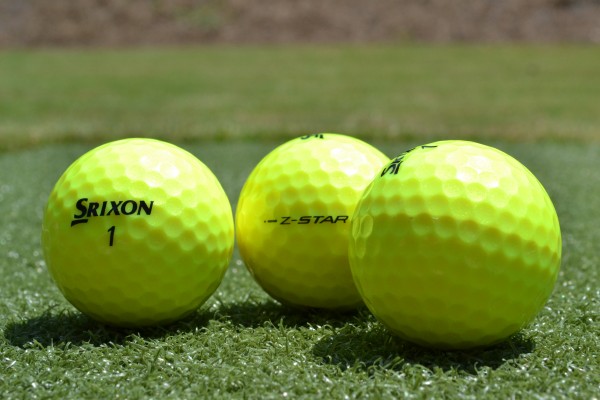
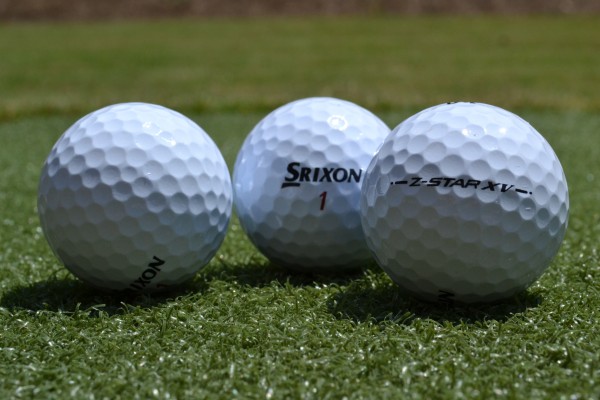


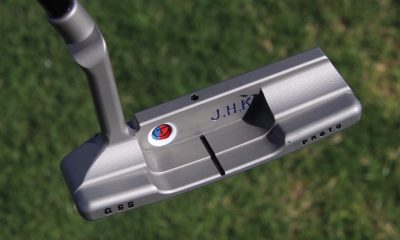



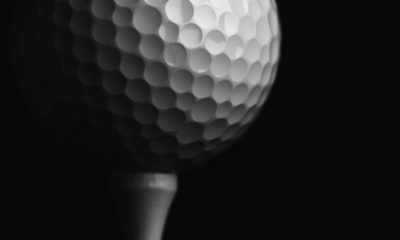

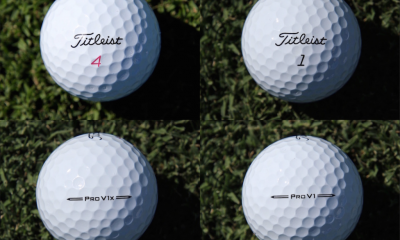

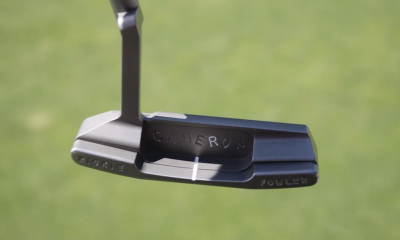

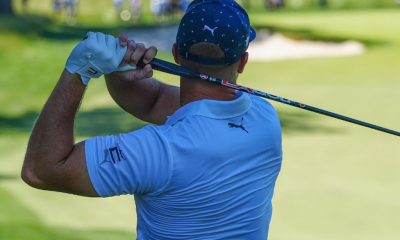



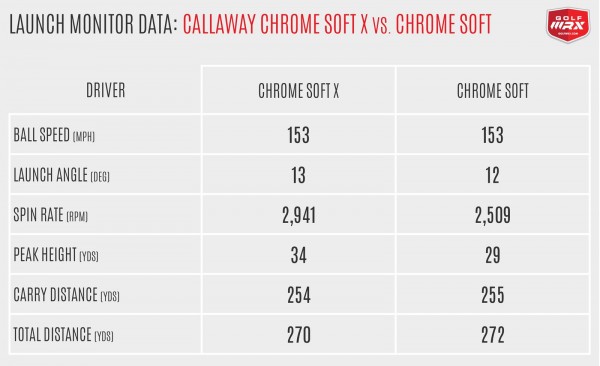
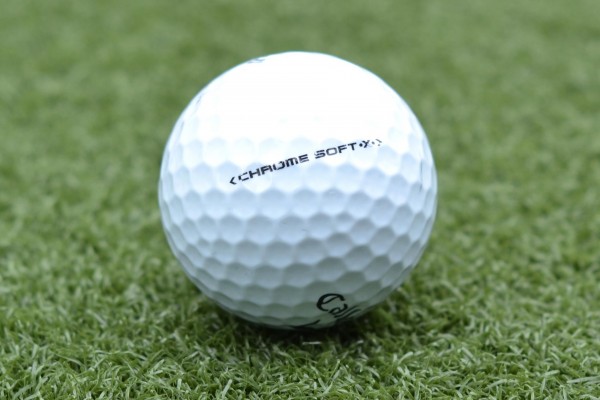
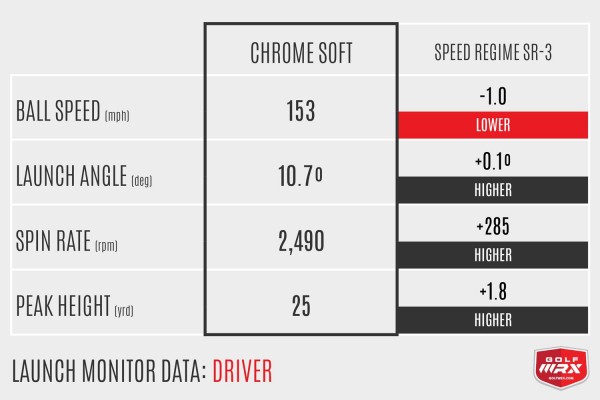
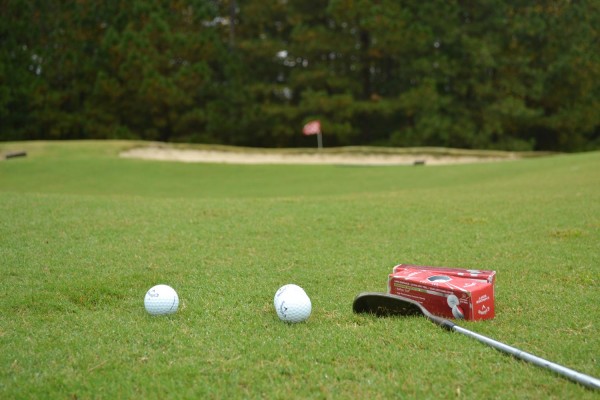
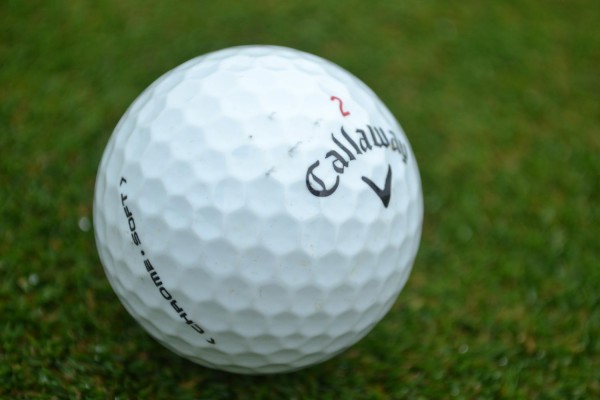









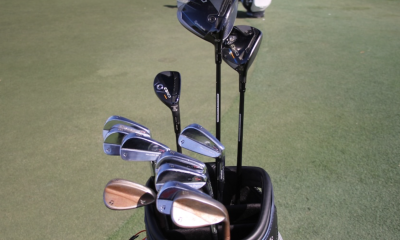

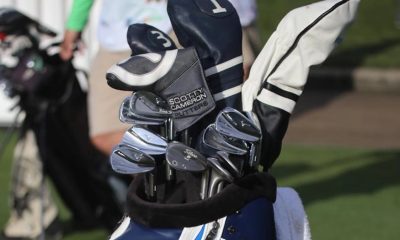

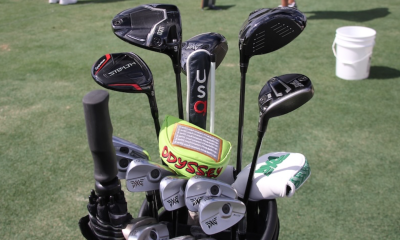

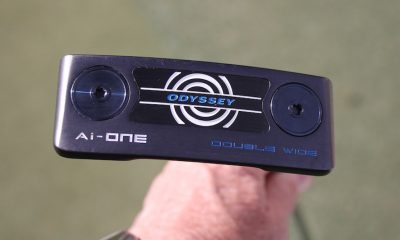

???????????????????
Oct 13, 2015 at 11:31 pm
???????????????????????????????????????????????????????????????????????????????????????????????????????????????????????????????????????????????????????????????????????????????????????????????????????????????????????????????????????????????????????????????????????????????????????????????????????????????????????????????????????????????????????????????????????????????????????????????????????????????????????????????????????????????????????????????????????????????????????????????????????????????????????????????????????????????????????????????????????????????????????????????????????????????????????????????????????????????????????????????????????????????????????????????????????????????????????????????????????????????????????????????????????????????????????????????????????????????????????????????????????????????????????????????????????????????????????????????????????????????????????????????????????????????????????????????????????????????????????????????????????????????????????????????????????????????????????????????????????????????????????????????????????????????????????????????????????????????????????????????????????????????????????????????20????????????????????????20??????????????????????????????????????????????????????????????????????????????????????????????????????????????????????????????????????????????????????????????????????????????????????????????????????????????????????????????????????????????????????????????????????????????????????????????????????????????????????????????????????????????????????????????????????????????????????????????????????????????????????????????????????????????????????????????????????????????????????????????????????????????????2????????????????????
Pingback: Srixon Golf Z Star - Business Golf Strategies
carlos morales
Nov 7, 2014 at 11:40 pm
mi comentario es el siguiente, tengo algunos meses jugando con srixon z star White, yo he encontrado una negativa, creo que la tecnología es novedosa pero yo encuentro un punto negativo, el core o capa externa se marca muy rápidamente y da la impresión de rescabrajarse , se parte comforme se va golpeando, la verdad para mi es muy incomodo jugar con una pelota marcada y agrietada, que lastima compre muchas cajas y pues ni modo tendre que jugarlas, al fin el golf me divierte y la función debe continuar. saludos.
marcel
Sep 2, 2014 at 12:16 am
hi Kane,
nice article and seems very expert like approach into the problem. however, and I think you are accomplished golfer, in your testing did you average the same swing speed etc. same shot making… as I have noticed that this varies for pros to the extent that the Robot can test it more accurately.
Skin Flute
Aug 19, 2014 at 6:46 pm
Anybody want to play me
Large chris
Aug 18, 2014 at 4:26 pm
I’ve been loyal to z stars for a few years now, excellent balls but this review confirms how hard it is to tell the difference between them. These or the Wilson FG tours are by far the best value premium balls in the UK.
But like others have said, sad that the fluorescent / translucent yellow has gone. Now they were pretty.
Robert
Aug 18, 2014 at 1:15 am
Very insightful regarding Srixon Balls. I love the way they play and I was very happy with them until a cleveland R & D Manager or VP said that you can compress them . I know I hit my driver under 105 but PROV1 and PROV1X says anyone can hit those and it shows that even an 80 mph swing can compress the ball. They need to make a new ball fast. There Srixon Tour Yellow ZSTAR was great but their 2nd generation although had a lot of distance, I didn’t like the yellow as much as the 1st year. Thank you for taking time to show the effectiveness of the balls and how the Q Star works well for higher swing speeds also. For the time being I will still keep trying balls but with my driver swing speed at 95MPH I should be able to play what is best for me and The Srixon XV is not good for me according to you and the EXECs at Cleveland. I will wait until they make another SL ball. So back to the drawing board.
MikeOZ
Aug 17, 2014 at 7:45 am
Kane
Can you do a shoot our using the same method for all the top line balls from each manufacturer compared to each other?
WRXClarky
Aug 16, 2014 at 11:38 pm
Nice review, but in my experience with these new balls, they pale in comparison to the old version. I can’t speak to the z-star, but the XV Tour Yellow is the best ball I have ever played since the famed TP Red. Durability, low spin off driver, predicatable greenside control,r all categories are better with the old version. Add to that the much much better colour, case closed. I have 14 dozen of the old kind stocked and I am so happy I did.
George Steen
Nov 29, 2014 at 7:04 pm
yes the older model xv was miles better , this ball spins way too much off driver
Scooter McGavin
Aug 16, 2014 at 4:39 pm
I’m curious to see the Q-Star review. That’s the ball I have played for a while now, and it has probably the best combo of price/performance that I have found yet.
Mike T.
Aug 17, 2014 at 1:29 am
How would you rate the durability of the Q-Star compared to Z-Stars? Im a big fan of the Z-Stars but if the Q-Stars durability is similair, I wouldn’t mind using Q-stars to save some money.
Kane Cochran
Aug 17, 2014 at 10:18 am
I found the Q-Stars to be more durable during testing than the Z-Stars thanks to the firmer cover. If I cleaned the three test balls off, I could put them back in the sleeve and it would be hard to tell they had been played.
Christosterone
Aug 16, 2014 at 11:08 am
The original neon yellow is the only ball for winter in Texas…
Its the only ball my old eyes can follow against grey skies and dormant bermuda.
Not a fan of the new mustard but come winter u will find me buying the z star…although your review has tempted me sufficiently to try the q star
Pingback: Review: Srixon Z-Star and Z-Star XV Golf Balls | Spacetimeandi.com
Pingback: Srixon Z-Star and Z-Star XV Golf Balls Review | Golf Gear Select
dot dot
Aug 15, 2014 at 10:04 pm
And the GWRX 4+ star review train keeps running.
rgb
Aug 15, 2014 at 8:13 pm
How about, for all ball comparisons, including a standard in every test. I suggest the Titleist Pro V1. This way numbers across brands and multiple comparisons will mean something that can be compared easily.
Kane Cochran
Aug 16, 2014 at 10:36 am
Thanks for the suggestion. We’ve started to do more direct comparisons between manufacturers with the recent Gear Trials series and are planning to do more in the future. For these reviews we’ve focused on the differences between versions of a specific ball (or lineup) like the Pro V1 vs Pro V1x or Z-Star vs. Z-Star XV. But you can actually take a look at the numbers from the earlier Pro V1 review, which was tested using the same clubs and launch monitor – http://www.golfwrx.com/206069/review-titleist-pro-v1-and-titleist-pro-v1x-golf-balls/
marc blanchard
Aug 5, 2016 at 8:54 pm
Hi, did you actually do this test between different manufacturers, I cannot find it? My choices of balls are pretty personal and depend on course conditions : my usual is the Srixon Ad333 tour, I sometimes game the Pro V1 (never the x, fells like a rock, same as the Z-star), and in very fast conditions the Wilson DX2! I’m just wondering what the real difference between the AD333 and the Pro V1 is with the driver and the 6 iron. Great reviews btw
RogerinNZ
Aug 15, 2014 at 7:17 pm
Very happy with Z Star and Q Star. Yellow is great help !
Rich
Aug 15, 2014 at 6:53 pm
These are awesome reviews Kane. Thanks. Was the data collected on the same launch monitor? Also, because you’re only human, some of the differences could be related to strike but it seems that your data is very comparable from ball test to ball test. Could I compare data from all your different tests as a starting place for my quest for the right ball for me. Lastly, have to say I’m really surprised to see how well the Q star performs. Very interesting. Well done, cheers.
Kane Cochran
Aug 16, 2014 at 10:42 am
Thank you, Rich! The data for all the ball reviews this year was collected using the same clubs (with clean grooves) and the same launch monitor. While the data has been collected over a few months, I’ve tried to be as consistent as I can be with my swing during each session. But you’re right, I’m only human! You should be able to look at the numbers in each of the reviews and compare them side by side as a starting point for your quest. If nothing else, it should help you be able to rank them in the order you’d like to test them for your own game. Good luck and let me know which ball you go with.
Rich
Aug 16, 2014 at 6:58 pm
Thanks Kane. That’s great. Again, the reviews are great and really give me a good starting point. I also struggle to keep driver spin down but don’t struggle with short iron spin so I think the SR2/3 might be the best place to start. I have to say I do agree with you when it comes to the way a ball looks. There is nothing better than the finish and printing on a Pro V1. It’s a class ball. I like the feel and the look but it can spin just a bit too much for my game at my home course. If I’m playing a tough, hard and fast golf course though, they are my number one pick. Thanks again, keep the reviews coming. They’re my favourite equipment reviews on Golfwrx. Cheers
Kane Cochran
Aug 17, 2014 at 10:14 am
The SR2/3 is a good place to start for sure. Thanks for the detail around your game and the reasons why you’re playing the ball that you play. It is always great to hear about the equipment choices of GolfWRXers so thank you for sharing and thank you for the positive comments as well, I appreciate it.
Rich
Aug 17, 2014 at 4:51 pm
You’re welcome. Hit ’em straight and hit ’em far. Cheers
Jimmy
Aug 15, 2014 at 6:42 pm
I personally love srixon golf balls but i do sample some other mfrs premium kool aid from time to time i always go back to the exceptional z’s and when it gets cold or cash is tight the equally impressive q star you can not go wrong they are worth a try
Kris
Aug 15, 2014 at 6:31 pm
I love The Z balls. The last 2 iterations I was extremely loyal to due to their near indestructibility. They always performed nearly as well for me as the Prov series or tour Cally balls (driver SS right around 100mph-driver 250ish, 8i 160, SW 110). But while I can tear up the other balls easily, I’ve had Zs last me double digit rounds no problem. Unfortunately the 13/14 balls (the ones reviewed here) are not as durable as the previous versions. Still above average, but not nearly as good (probably bc of the Spin Skin-which imo barely adds any spin). Add that with the new Tour Yellow being more mustardy than the previous awesome fluorescent and I’m no longer so loyal. Wish I could find a huge supply of the 11/12 TYs.
Brian
Aug 15, 2014 at 6:09 pm
I have a very average SS at 92mph with the driver and recently tested all four Srixon offerings, ultimately switching to the new XV as it really reduced the side-spin off the driver and held its line on putts better than the Z or Q star. I went into this little test believing the XV would be far too hard-feeling for my personal taste since Bridgestone’s E6 is what I’ve used the past 2 years, but the XV compressed well on irons and felt great on wedges and off the putter. I mention this because the ball is marketed toward tour level swings, but it goes to show that the average guy can see benefits, too.
Kane Cochran
Aug 16, 2014 at 10:44 am
Great point, Brian! The swing speed suggestions are just that… suggestions. You did exactly what you needed to do and that’s go out and hit them for yourself. Thanks for sharing.
martinping
Aug 21, 2014 at 8:21 am
I totally agree. I have a ss around 100 and there is no doubt that I like the xv more.
Hellstorm
Aug 15, 2014 at 6:06 pm
I love these reviews that you do. I am always excited to find a Srixon in the woods and play a few holes with it. I always liked their AD 333 ball, but I don’t think they make it anymore. Anyway, thanks for the review and keep the reviews coming.
Kane Cochran
Aug 16, 2014 at 10:45 am
Thank you. I’m really happy you’re enjoying the format of these reviews and we’ll keep them coming!
Mike T.
Aug 17, 2014 at 1:38 am
I also love your reviews! I play the regular Z-star and I effn love them! Has good chip back spin when you want it and the back spin on approach shots makes my buddies say WOW!
Keep them reviews coming and im going to start following your quest to single digit as well. Been playing for 10 months and my goal is to bbein thw singles by the end of the year.
Kane Cochran
Aug 17, 2014 at 10:10 am
Thanks, Mike! Sounds like you’re really working hard and making great progress toward your goal. If you’re able to go from not playing to single digits in a little more than a year, that is quite an achievement. Best of luck and let me know when you hit your goal!